Elsa Wiik &Ancestors |
||
Click on a name to read more about the person or click for an Alphabetic List of all Names. |
||
 |
||
We wish to thank Åse for sharing the research done by genealogist Kaare Hasselberge, with us. |
||
The family moved to a farm in Haugesund. They later moved to a big house in the Nesttun section of Fana borough in Bergen, the second largest city in Norway. In 1915 Elsie boarded a ship in Bergen named Bergensfjord bound for America. She was alone and 18 years old. While on the ship, she is recorded as being in detention for one day on June 5, reason not given. She arrived at Ellis Island in New York City on June 5, 1915. Her occupation was domestic and she is known to have been a chambermaid. Her three elder brothers, Petter, Frederick and Kristian were already in New York. On the 1915 New York State Census she is listed as 18 year-old Elsie Weeks, living in New York City on West 4th St as a lodger with the Medford family, who are also from Norway. It states she has been in the US for 30 days and has no occupation. On April 25, 1919, in New York, NY, she married Arvid Harold Strom, who was from Sweden. At some point after that Harry, as he was known, went to California and Else joined him there. They returned to NY as on June 3, 1923, their daughter Ella June was born in Glen Cove, Nassau County. The 1925 New York State Census shows 28 year-old Elsie, as a housewife, living with her husband and two year old daughter Ella at 6911 4th Avenue in Brooklyn. Harry and Else separated and were divorced on April 3, 1928, in Miami, Dade County, Florida, and he wasn't heard from again. On the divorce decree she is listed as living at 6816 Bay Cliff Terrace in Brooklyn, which is where her sister Dagmar was living in 1930. The 1940 census tells us that sometime before April 1, 1935, John and Elsie moved in with Elsie's sister Dagmar's family, the Ericksens, in the house that they owned at 225 88th Street in Brooklyn. John Johnsen died on February 4, 1956. Some time after, Elsie married Gus Nelson. Else Wiik Strom Johnsen Nelson died of a stroke on February 4, 1966 in Brooklyn, 10 years to the day after her second husband John died. She was buried in the Evergreens Cemetery in Brooklyn, with him on February 7th. There isn't a headstone on the grave. (Mouse over image right for details.) |
||
| ~< Back to Chart >~ | ||
It seems that soon after his confirmation, Ove left the Vik farm to begin his career as a seaman. In the 1875 census, he was in the household of Johan Kristiansen, who was living in Berg, on the Sandsvig farm in Troms County, listed as a fisherman. Ove’s family status was visiting, with the occupation of unattached fisherman. He was then about 24 years old. Chances are that he and Johan both worked on the same fishing boat and were in between fishing trips. Ove Kristian didn’t put in a formal church transfer to Bodø until late in 1883. This record states his confirmation date, and that bachelor Ove Christian Olsen, born on May 12th of 1851, relocated to Bodö (Bodø) in 1866. His name is number 12 out of a list of 14 for the year, which indicates this was just a few months prior to his marriage to Marcelie Carlotta Fredriksdatter on January 10, 1884 in Bodø, Nordland County. The Norway, Marriages, 1660-1926 record lists his name as Ove Kristian Olsen and his father’s name as Ole Kristofersen, which is a longer version of Ove’s middle name. So it seems, it is in Bodø that his name changed from Christian to Kristian. On this marriage record he is listed as a skipper, which would indicate that he earned his living on ships from the time he left Ørlandet, and worked his way up to skipper. By the time his third child was born, he was a steam boat captain. Ove and Marcelie lived with Marcelie's parents on Store Hjertøy for the first few years of their marriage. This island is right off the coast from Bodø and is now uninhabited. Ove and Marcelie had nine children, most born in Bodø – Kaja Kathinka Louise, born on Hjertøy only seven months after the marriage on August 28, 1884; Petter Ober Julius, on July 22, 1886, the first child to be born in the town/city of Bodø; Karen Marie on May 22, 1888; Fritz Freddy Johan on May 9, 1890; Kristian Marius on August 14, 1892; Kity Evara on October 17, 1894; ancestor Elsa; Dagmar on June 9, 1901, the last child to be born in Bodø; and Karla Terese born on February 10, 1902 in Avaldsnes, Rogaland County. On the 1891 Bodø township, State Census shows them living in a house at Sandgaden 32. It seems to indicate that he is self-employed, the owner of the house who rents rooms to eight other families, in all, 39 people in the house. His name is listed as Ove Kristian Olsen Wiik, and living with him is his wife, two daughters Kaja and Karen; two sons, Petter and Fritz; his sister-in-law Kristine, listed as a servant, and a 20 year-old male servant named Helmer Marius Buge Petersen. In an email response to where this house was located, the Norwegian Archives tells us that this street runs NW-SE and crosses Kongens gt and Prinsens gt. On a modern map today, this address doesn’t exist. The street is now called Sandgata and begins at the harbor. An apartment building, with an address on the cross street, now stands at the end of this street, most likely where Sandgaden 32 once stood. The last house number prior to the apartment building on Sandgata is 18. The Archives also state that because there aren’t mortgage papers on file for him, he was a renter.
Some time after June of 1901, Ove Kristian moved his family south to a farm in Avaldsnes, about 9 km south of the modern town of Haugesund, in Rogaland County, where his last child was born. This is probably where he was known as Åsakongen which loosely means the king of Ås. Since he was away all the time, his wife and children did all the work on the farm. According to his children’s Confirmation records, in 1903 and 04, the family was living at Myge 29 (today it’s called Mykje), a farm in Avaldsnes. Later, he sold the farm and they moved to a big house in Bergen in Nesttun, an urban center and neighborhood in the southern parts of the city, located approximately 10 km south of Bergen’s center. On the 1910 Norway Census, all but Petter and Kathinka are listed. Petter went to America in 1909, and Kathinka went to Iceland. This census lists Kristian Olsen Wiik, a seaman, born in Ørlandet on 12.05.1851 and living in the residence called Nesttun in the Fana parish, which is today is a borough of the city of Bergen. There is also a 13 year-old girl named Elfrida Olsen, who was born in Bodø and is listed as a servant, living with them. In reality, this girl is the illegitimate daughter of Marcelie’s younger sister Hansine, who the Wiik’s took care of for some time. The note listed under the residence information on the census translates to “The property has two Houselist 70a and 70b.” There are three different households in the 70 houselist, but it does not indicate which one the Wiik's lived in.
About this same time, Kristian “guaranteed for a timber merchant” who later went bankrupt and he lost everything, including his home. He had a stroke, was paralyzed, and lost his ability to speak. He died in the borough of Årstad in Bergen, Hordaland County on November 30, 1925, at age 74 and was buried on December 7th in Møllendal Cemetery. Because it is common to re-use grave sites in Norway, his grave no longer exists. Årstad is located south of the city center of Bergen, is a low-income area and is the home of the largest patient count hospital in Norway, Haukeland University Hospital. On his death record Kristian's residence was listed as Bøhmergt. 35, which is probably an abbreviation for Bøhmergaten, which is only 3½ km north of Årstad. |
||
| ~< Back to Chart >~ | ||
When Marcelie was 25, she married Ove Kristian Olsen Wiik on January 10, 1884, in Bodø, Nordland, Norway. See Ove above for details of her life after the marriage and their children. By this time Marcelie was calling herself Charlotte. After her husband died in 1925, she left Bergen with her daughter Kitty’s family, to live with her daughter Kathinka in Odda, as work was plentiful there. One year later in July, Kathinka became very ill after childbirth and died. On February 17, 1929 Charlotte, as she was known, went to America to visit her other children who lived there. On her Emigrants from Bergen record, her residence is listed as Odda, and her port of departure was Bergen. She arrived in New York on February 27th on the ship Bergensfjord, which is the same ship her daughter Elsie came to America on fourteen years prior. On the 1930 US Census she is listed as Charlotta Weeks, 67 years old, widowed, living with her daughter Dagmar and her family at 6816 Bay Cliff Terrace in Brooklyn, Kings County, New York. It is not known how long she stayed in America, but it is likely she returned in the late summer of 1932. This is because on September 22 of that year, her daughter Dagmar and their entire family returned home from a trip to Norway. The assumption is they took her home. It is known that in late 1932, she moved in with her daughter Kitty’s family, who had since moved back to Bergen. She is listed on the 1934 Voter Census 1934 for the local election in Bergen list as Charlotte Marselie Wiik, living with her daughter Kitty’s family in Kalfaret, Årstad.
Marcelie Carlotta Fredriksdatter Wiik died on November 16, 1934, in the Årstad parish. On her death record, her name is listed as Charlotte Masselin Wiik and her residence is listed as Svaneviksvei 9, Kitty’s family’s home. She was buried on November 22nd in Solheim Cemetery. Because it is common to re-use grave sites in Norway, her grave no longer exists. It is interesting to note she is not buried with her husband, or even in the same cemetery. |
||
| ~< Back to Chart >~ | ||
In 1850, he worked on a farm called Vik where he had a relationship with Ane Oline Olsdatter, and in 1851 at 26 years-old he became the father of Ove Christian Olsen Wiik, but did not marry Ane. (Mouse over and click on Ove's birth record image right to enlarge in a new window/tab.) Wiik descendants say that Ole Christophersen left the farm about 2 years later without his son. Unfortunately, a death record for Ole can not be found.
Only four years later, in 1850 Ane was 20 years-old and in the service of the Paulsen family on the Vik farm in Ørland. She met 26 year-old Ole Christophersen there and became pregnant with ancestor Ove Christian. According to descendants, she left the farm two years later without her son. Ane travelled to Trondheim where she met a skipper named Bernt Johnsen Rekstad (sometimes spelled Rextad), who was born in 1830 in Strinda, which is now part of Trondheim. Again Ane became pregnant and on July 12, 1857, their daughter Josefine Elisabeth was born. Less than a month later, on August 2nd, Ane and Bernt were married in Nidarosdomen (Nidaros Cathedral in Trondheim) and on September 13th their daughter Josefine Elisabeth was baptized (also in Nidarosdomen) and she then was considered to be legitimate. Ane died just nine days later, on February 10, 1865, due to complications from childbirth. She was only thirty one years old. Bernt named the child after his deceased wife. Sadly, the child died on April 24, 1865 at less than three months old. Because of the harsh winter, Ane Olina’s body was not buried until April 2, 1865. It was not uncommon for burials to be delayed for this reason. The ground may have been frozen and hard to dig. The body was kept airy, dry and cold on the high heel, until the burial could take place. Anne Oline Rekstad was buried in the Trondenes Cemetery, which today is located in Harstad, Troms County. Her grave is marked with an embossed iron cross with filigreed tips and still exists today. A photo of it was found on the Cemeteries in Norway website provided by The Genealogy Society of Norway. (Mouse over image right for details.) In the census taken in December of 1865, we learn that her husband Bernt, spread his children out within his family, keeping only his eldest son with him. Two years later on December 5, 1867, Bernt re-married in Trondenes, settled on the Melvik farm and had a large family. He died there on June 26, 1905. |
||
| ~< Back to Chart >~ | ||
Some resarchers have said that he served on a cargo ship under skipper Nils Larsen Miklebostad (see naming convention below) on Innstranda north of Bodø in the early 1850‘s. By April of 1553, Fredrik was in Myklebostad, which is north of Innstranda, where his first child was born out of wedlock. On September 20, 1855, 27 year-old Fredrik married 25 year-old His wife died in 1900 and his youngest daughter Kristine and her husband Fredrik Jacobsen Sandvik moved in with him on Store Hjertøy. On the 1900 census, they are still living with hi on the Hjertøen farm in the municipality of Bodin, and he is still working the land. Fredrik Mortensen died there on June 25, 1904 soon after this census was taken. He was buried on July 1st in the Bodin Churchyard, which is located on the mainland in the town of Bodø. This is the church where his wife’s ancestor was a minister.
Fredrik and Johanna had at least seven children together – a son Christian Cornelius Bernhard was born before the marriage on April 14, 1853; Johan Marin Bernhard was born on January 24, 1856; Peter Oluf Hans Gotfrid on July 23, 1859; ancestor Marcelie Carlotta; daughters Hansine Josefine Marcida on September 15, 1865; Eline Josefine on July 23, 1868, who died less than a year old on April 23, 1869; and Kristine Kornelie Bernhard on May 12, 1871. The first four children were born in Myklebostad, the rest were born on the island Store Hjertøy. Johanna Christine Johansdatter died on Store Hjertøya, four years prior to her husband on April 9, 1900. She was buried on April 20th, with the name Johanna Katrine Mortensen in the Bodin Churchyard, which is located on the mainland in the town of Bodø. This is the church where her ancestor, Hans Lauritssøn Blix, was a minister, from 1622 to 1666. |
||
| ~<^>~ | ||
Morten Frederiksen was between 1760 and 1772 probably in Larvik, Vestfold County, Norway, the eldest of four known children born to parents Fredrik Christophersen and Barbro Maria Rafaelsdatter. There is a confirmation record for his The next 17 years is unknown to us, but sometime prior to 1819, Morten met ancestor Petriche Maria Jensdatter and they have a daughter born out of wedlock in 1820. On her birth record he is listed as Matros, which translates from the Danish as The sailors. Morten fathered another illegitimate child with Petriche in 1825. On December 24, 1826, 65 year-old Morton, listed as a carpenter, married 39 year-old Petriche Maria Jensdatter in the Nykirken (New Church), in Bergen, Hordaland County, Norway. The image of the marriage record clearly states he is 65 years old. We know this is him as the record states he was born in Larvik as the son of a Fredrik Christophersen and he is listed as the widower of Catharnia Pedersdatter. Morten and Petriche have at least one more child together. Six years later, on February 16, 1834, Morten Fredriksen died in Bergen and was buried on the 22nd in the Korskirken Parish. On the burial record his age is recorded as 74 years old. ~<^>~
|
||
| ~< Back to Chart >~ | ||
~<^>~
|
||
| ~<^>~ | ||
The 1801 census for Larvik tells us that this was the first marriage for both Fredrik and Barbro; he is listed as 54 years old, which puts his birth year at 1747; three daughters are listed with them ages 19, 15 and 11; and they lived Where Fritzøe Ironworks is located. Four years after this census was taken, his wife died. The Church Book from Larvik Parish, Langestrand Local Parish 1818-1842 tells us that Fredrik Christophersen died of old age on August 18, 1826, in Langstrand Parish and was buried there on the 24th. (Mouse over and click on image right to enlarge in a new window/tab.) This record states that he was still working at Fritzøe Ironworks! His age is clearly listed as 90, which calculates his birth year to 1736. One of these records has the wrong age on it. The actual census image is not viewable, so it’s likely that’s where the transcription error was made. ~<^>~ Barbro Maria Rafaelsdatter was born about 1746 to unknown parents. She married Fredrik Christophersen and had at least four children together, all baptized in Langstrand Parish in Larvik in Vestfold County, Norway, on the dates given – ancestor Morten; Anna Maria on August 7, 1784; Johanne on April 20, 1780; and Berthe Chirstine on May 30, 1789. It is interesting to note that all the children’s surnames were listed as Fredriksen on their birth records. There was no differentiation between males and females. See the Norwegian Naming Convention below. Barbro Maria died at 59 years old on November 5, 1805, of chest weakness and was buried on the 11th in the Langstrand Parish. Nothing more is known about her. |
||
| ~< Back to Chart >~ | ||
Jens Sehuus was born about 1750 to unknown parents probably not in Norway. According to the Sund, Hordaland County, Norway Parish Register Nr. A5, bachelor Jens Siursen was betrothed to marry Bente Bentsdatter there on October 20, 1784. That same register tells us that a daughter was born to them and baptized on December 25, 1784. Jens Sehusen married Benthe Bentsdatt two months later on March 6, 1785. They apparently moved to Bergen, as that’s where their second daughter was born the following year. Jens was an able seaman, who worked as a deckhand, but was paid on a daily basis. There is a Communicant record in the Nykirken Parish for Jens Sehus, dated August 8, 1790, that lists his occupation as Dagløner med K. i Strhg, which roughly translates to Dayworker with Church Strandhagen. Cousin Åse tells us that “the road that leads up to Nykirken church is called Strandgaten, (the road along the beach, directly translated). But in 1790, I assume, they called it Strandhagen.” It could be that he fell ill and took Communion fearing his death was near. He died two years later on March 6, 1792 at the age of 42, in Bergen. His death record listed him as Jens Sehuuswho was a deckhand, residing “From the city hospital poor free ground” (rough translation). He was buried in St. Paul's Burial Ground in Bergen six days later, on the 12th. (Mouse over image left.) ~<^>~
According to the Church Book for Preston, Sund in Hordaland County, she was engaged on October 20, 1784 to Jens Sehuus and a month later, on Christmas day (Jule Dag), they baptized their daughter Sara. Benthe and Jens married two months later on on March 6, 1785. They lived in Bergen and had another daughter, ancestor Petriche Maria two years later. They probably had other children, but records can not be found to confirm any others. After her husband died, she returned to Austevoll, which is south of Bergen and died a pauper there four years later in 1796. She was buried in the Møgster Churchyard on January 31, 1796, on Stolmen Island, one of the large islands in Austevoll off the west coast of Norway. There are records of her death and burial on this date in the Sund Parish Church Registers A6 and A7. A rough translation of part it, is “In the morgue lay ordinary poor Benthe M Daughter of Bent Mejer given light in Holmvågen.” |
||
| ~<^>~ | ||
Christen Christensen was baptized on July 2, 1767, in Bodø, Nordland County, Norway. He was the last child of three born to Christen Storm Pedersen of Hæmes and Ingeborg Jakobsdatter. Christen never knew his father, as he died two months prior his birth. His mother remarried two years later, thus Christen as a three year-old child had two full siblings, three half-siblings, plus step brothers and sisters who were the children of his step-father.
~<^>~ Anne Dortea Danielsdatter was baptized on February 12, 1764, in Bodø, Nordland County, Norway. She was the second of seven children born to parents Daniel Knutsen and Karen Olsdatter on the Hopen farm. She was engaged on December 29, 1793, to Christen Christensen and married on July 29, 1794 in Bodø. They had at least three children, all baptized on the dates shown in Bodø– Martha Mallena Christensdatter, born two months before the marriage on May 18, 1794; ancestor Johan; and son Hans Christensen on May 23, 1802, who died just hours after his father’s death and was buried with him on April 28, 1813. On the 1801 census, her twice-widowed 53 year-old mother, Karen, was living with Christen, Anne and their two children, Martha and Johan. Anne Dortea Danielsdatter died less than six months after her husband’s and youngest son’s death. She was buried in Bodø on October 3, 1813. |
||
| ~<^>~ | ||
Jacob Joensen was born about 1784 in Helgeland, which is the most southerly district of Nordland County, located south of the Arctic Circle in Norway. His ancestry is unknown. He made his way to Bodø, in Nordland County by 1801 when he was working as a male servant (loose translation) on a farm called Olagården in Lower-Rønvik there. The 1801 census for Rønvik has unmarried 17 year-old Jacob living with 36 year-old Jørgen Joensen, his 50 year-old wife Sofie Olsdatter and their 5 year-old foster daughter Berit Sofia Mortensdatter. It is not known if Jacob was related to Jørgen, but they could have been half brothers or cousins. On December 28, 1803, Jacob married Beret Olsdatter in Bodø. If Beret or Jacob were related to Sofie mentioned above is unknown, but they did give their daughter the middle name of Sofia. He apparently worked hard and was considered a farmer on the same farm from 1807 to 1813. Jacob Joensen of Rønvik became ill and died young on July 15, 1813, he was only 29 years old. He was buried five days later on July 20th. ~<^>~ Beret Olsdatter was baptized on September 19, 1779 in Bodø, in Nordland County, Norway. She was the fourth of seven known children born to parents Ole Olsen of Vågøya and Karen Andersdatter Beret’s father died when she was 11 years old and her mother remarried when she was 19. On the 1801 census for 1843P Bodø, she is listed as 22 year old, unmarried Berith Olsdatter, living with her mother on a farm called Vaagøen. On October 30, 1803, in Bodø, she baptized a son, Luckas Jacobsen, whom she had with her soon to be husband, Jacob Joensen. She married Jacob two months later on December 28, 1803, and had at least one additional child, ancestor Carolina Sofia Jacobsdatter. Five years after her husband’s death, on October 20, 1818, Beret Olsdatter of Rønvig married Christopher Henriksen, who also lived in Rønvig. One of the witnesses to the marriage was from the same farm that Beret lived on with her mother in 1801. Christopher and Beret lived on Olagården in Ner Rønvika (lower Rønvik), the farm she lived on with her first husband. Beret Olsdatter Olsen died on September 9, 1845, and was buried on the 14th in Bodø. Her death record lists her as a 74 year-old Rønvigen. |
||
| ~< Back to Chart >~ | ||
The Norwegian Naming ConventionEric's article Understanding Norwegian Naming Patterns posted on the Norwegian Ridge website. As you go back through the generations, you will see many different names used to describe the same family. There a few different forces of history influencing this phenomenon. Let’s clear it up a bit. The Early Days of -Sen and -Datter With Respect To Your Parents Many names you encounter will follow a later system common to Scandinavian and Northern European countries, which assigned a baby’s name based on its birth order. Drawing first names from both sides of a family, each child is named to pay respect to an ancestor and to integrate a new family structure: First son: named after paternal grandfather That’s pretty simple, but there are lots of exceptions that would arise. Later children would be named after great-grandparents, though not following the pattern above. If a parent died before the baby’s baptism, that parent’s name would override the pattern; if the child was of a different sex, the next eligible child would receive that parent’s name. If a child in the family died, the next child of that sex would be named in its honor. Also, if a couple took over the bride’s farm, the first son would be named after its maternal grandfather. There is another tradition regarding first names, which is encapsulated in the Norwegian proverb: “The name and the farm must go together.” In short, if a child was in line to inherit a farm, he would be named for a prior owner (even, apparently, if that prior owner was not a family member). Old Names, New Names Our example father, Anders Olafsen Sandness, could be listed in the 1860 US census as Andrew Olsen, Andrew Olson, Anders Olufsen, Anders Olafsen, etc. Remember that it is the census taker or other government official who wrote the names down, and the respondents were usually not literate and may not have spelled their own names. So the census taker, who in these earlier years would likely not be Scandinavian, would spell a name as they were accustomed or how they thought it sounded. Census taker: “What’s your name?” This is the reason it is so common to believe you have found the right family in census records, except that the names don’t quite exactly match. You are probably correct. Also, be aware that surnames ending in -sen or -son were written according to the preference of the census taker rather than the traditional spelling (usually -sen). The letter “C” was not common in Norway, but as names were Americanized it was often substituted for “K.” It was more important for a census taker to accurately account for all inhabitants and the details of their crops rather than to spell the names correctly (see this note from an uneducated census taker). Other examples of Americanized names are: Øystein -> Austin Choosing a Family Name Place names would often be taken from the farm from which they emigrated. Because many Norwegian farms were divided from larger farms over the centuries, they would often share a place name and append a more specific identifier. For example, in Grue, Hedmark, the Skyrud farm has been divided into Skyrudsbraaten (slope), Skyrudshaugen (hill), Skyrudsmoen (moor), and Skyrudsteppen (plains). Physical characteristics such as Øver-skyrud (upper) or Nordre-skyrud (northern) were also used. So while one family might choose Skyrud for a surname, another might choose Haug or Haugen, or Mo or Moen. Sometimes the name of the village would be selected. Place names were useful because they indicated the origin of the family, especially to those who hailed from the same region of Norway. In the period before emigration, land became more scarce and a newly married couple might rent a nearby farm, especially if their own farm was over-occupied. They might end up choosing a name that does not have historical association for the family. In my own family, my immigrant ancestors sold the family farm (which had been their home for generations) and moved to a temporary farm for a few years before emigrating. In America, they adopted the name of the temporary farm rather than the ancestral farm. On the other hand, don’t be alarmed if a bride and groom share the same last name – they are probably from different parts of a large farm. Occupations are also chosen as surnames, especially if it was an occupation in Norway. If someone was locally known as carpenter, it would be part of their identity already. Elling Hansen Snekkeren (Elling Hansen the carpenter) would have an easier choice than a farmer. Other examples are Smed (smith), Møller (miller), and Kusken (driver). Note that these are more commonly found as place names such as Smedstad (smith’s place) or Snekkerplads (carpenter’s shop). Overall, occupations are less common as a basis for family names than than patronymic or place names, but it’s nice to find them as they reveal something about the family back in Norway. Characteristic names are also less common. They could describe just about anything related to the family, but often are attributed to the patriarch at the time the name was chosen. It can be hard to determine if the characteristic is really about a person, or rather a place. Some examples of characteristic names include Svarte (black) and Rask (fast). These characteristic names are particularly common among royalty and those with titles and military victories. I have also seen a few examples of foreign names adapted to Norwegian in this category, such as Brun (Brown). It’s Not Misspelled If There Is No Correct Spelling
Many earlier records contain approximations of names based on the experience of the writer. A census taker for the Norwegian census of 1865 will do a better job. Other resources to help understand these practices are available. The most complete information can be found in Einar Haugen’s excellent piece Names in a New World or NAHA’s Norwegian-American Surnames. Also take a look at John Føllesdal’s Norwegian Naming Practices and Oluf Rygh’s database of Norwegian farm names (be sure to click on the search form link at bottom to try your search). |
||
The Bergensfjord |
||
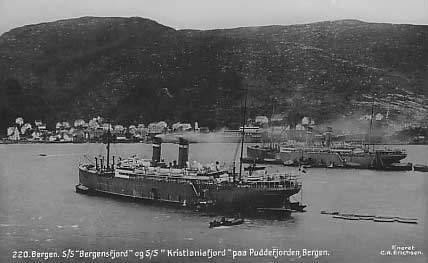
The ship Bergensfjord was in service from 1913 to 1947. It had two funnels, two masts and was part of the Norwegian America shipping line. Its Maiden voyage was out of Oslo-Bergen to New York in September of 1913. It was built by Cammell, Laird & Co., in Birkenhead, England, weighed 11,013 tons and was 512' x 61' (530' o.l.). It had twin-screw quadruple expansion engines and travel at a speed of 15-17 knots. It was later converted to combination quadruple expansion engines and steam turbines. During World War II it served as a troopship and it was renamed several times: The Argentina in 1947 for Home Lines; the Jerusalem in 1953 for Zim Lines; and the Aliya in 1957 Zim Lines. It was scrapped in 1959. |
||
|
||
Bergen |
||
Bergen (Norwegian pronunciation bærgən) is a city and municipality in Hordaland on the west coast of Norway. It is the second-largest city in Norway, covering an area of 180 square miles (465 square kilometers) and is located on the peninsula of Bergenshalvøyen. The city center and northern neighborhoods are located on Byfjorden and the city is built around the Seven Mountains. Many of the extra-municipal suburbs are located on islands that connect to Bergen with four large bridges. Bergen is the administrative center of Hordaland and consists of eight boroughs—Arna, Årstad, Åsane, Bergenhus, Fana, Fyllingsdalen, Laksevåg and Ytrebygda. Trading in Bergen may have started as early as the 1020s, but the city was not incorporated until 1070. It served as Norway's capital from 1217 to 1299, and from the end of the 13th century became a bureau city of the Hanseatic League. Until 1789, Bergen enjoyed exclusive rights to mediate trade between Northern Norway and abroad. In the past, numerous fires hit the city. The remains of the quays are called Bryggen, and are a World Heritage Site. From 1831 to 1972, Bergen was its own county, after which Bergen amalgamated with the surrounding municipalities. Today the city is an international center for aquaculture, shipping, offshore petroleum industry and subsea technology, and a national center for higher education, tourism and finance. Natives speak the distinct Bergensk dialect. Bergen Port is Norway's busiest. |
||
Nesttun |
||
A problem facing Nesttun is flooding after heavy rain. In 2005 heavy rain caused the river that flows through the town to break its banks. Until the opening of the Ulriken Tunnel in 1964, Nesttun was a station on the Bergensbanen railway, and a station on the Nesttun-Osbanen railway until its closure in 1935. After lengthy construction work, the two double-lane roads that went through the center of Nesttun were converted into a pedestrian mall and a single-lane road. Nesttun is a major traffic junction of the Bergen area, using the Bergen Light Rail system. |
||
Nykirken |
||
The church was originally built in 1621 on the site of the ruins of the home of the archbishop, a stone building that was built in the 14th century, and was destroyed by fire. The church only stood for two years before it burned down in 1623. It was immediately rebuilt. In 1660 the church was again destroyed by fire and again rebuilt in 1670. Later fires happened in 1756 and in 1800. On April 20, 1944, during World War II, the church was once again destroyed when the German ship Voorbode exploded in Vågen leaving large parts of Bergen in ruins. The reconstruction followed the plans of the church built after the fire in 1756, including the spire called for in architect Johan Joachim Reichborn plans but it was not built. The church has 750 seats, somewhat less than it did before 1944. The great majority are in high-sided box pews, although there are also some painted wooden benches, more suitable for children. The church is informally known as 'the Children's Church' following the desire of a former Bishop of Bergen to develop this use. In consequence local children have largely decorated the interior. These decorations include hand-painted icons, hanging mobiles, and large paintings that have been set into double-glazing panels to form a stained glass effect at every window in the main church building. The Baptismal Angel is a massive carved angel, which descends from the ceiling of the church by means of a pulley system, bearing in its hand the bowl for infant baptisms. The original was donated in 1794 in memory of Heinrich Pütter, but was destroyed in the 1944 explosion. The Bergen Cathedral, who had always been the owners of the matching angel, but kept it unused in storage, donated the replacement. The mechanism for the angel is now electrically operated. |
||
| ~< Back to Chart >~ or ~< Back to Map >~ | ||
Bodø
It lies just north of the Arctic Circle where the midnight sun is visible from June 2nd to July 10th. Due to atmospheric refraction, there is no true polar night in Bodø, but because of the mountains south of Bodø, the sun is not visible from the city from early December to early January. The average number of sun hours in Bodø is highest in June with 221 hours. Located on an unsheltered peninsula in the Norwegian Sea, Bodø is one of Norway's windiest cities. Despite its location just north of the Arctic Circle, Bodø features a subpolar oceanic climate, with chilly - but not cold winters and cool summers. Snow cover during winter is usually sparse, not only due to the wind, but also an effect of a mild winter climate relative to its latitude with periods of rain being common in the winter. The strongest tidal current in the world, with water speeds reaching 22 knots (41 km/h; 25 mph) is Saltstraumen, situated some 19 miles (30 kilometers) east of Bodø. |
||
| ~< Back to Chart >~ or ~< Back to Map >~ | ||
Larvik
The Norse form of the name must have been Lagarvík. The first element is the genitive case of lǫgr m water; river (now called Numedalslågen river), the last element is vík f cove, wick. The meaning is the cove at the mouth of (Numedals)lågen. Prior to 1889, the name was written Laurvik or Laurvig (the Danish spelling). Notable geographical features include the lake Farris and the river Numedalslågen, locally called Lågen, which terminates in Larvik, east of the town. Other bodies of water include the lakes Eikeren, Farris, Goksjø and Hallevatnet. Larvik is also noted for its natural springs of mineral water, Farriskildene, which have been commercially exploited under the brand name Farris. At Kaupang in Tjølling, lie the remains of the medieval Skiringssal trading outpost. Larvik is also home to the world's northernmost natural occurrence of Fagus sylvatica forests (European Beech tree or Norwegian: Bøkeskogen). The following is a description of Larvik quoted from Boydell's Picturesque Scenery of Norway, where the above image was scanned from. "Is beautifully situated around the head of a spacious and beautiful bay, at the feet of lofty mountains. The hills on each side of the water, and the rocky islands in it, are more pyramidal than others in Norway; their summits are crowned, and their sides diversified with trees, and little groves, rocks, verdure, and some sand. The trees are mostly firs, of different species, larch, birch, some small oaks, and on one of the hills, (a singular and much valued feature in this place) is a luxuriant grove of tall beech trees. From the sandy shore, under the hills, the white church is seen on a commanding eminence, surrounded by a duster of houses; it is an ornament to the town, and a landmark to ships. In this harbour, they are considered as well sheltered from the most dangerous winds, and in safe anchorage; their security is enhanced by the impracticability of any surprise from an enemy, as few would have the temerity to attempt a pass, between the numerous rocks and islands which guard the entrance. Beyond it may be seen the Skager Rack, and at times large fleets of ships passing. The water is salt and very clear. This place, like other seaports in the west, has no appearance of regular tides; a south wind will increase its waters, but they regularly subside with it. On the right, at the farther extremity of the bay beyond the rocks, is the strong castle of Fredricksvearne, having well-constructed batteries, mounted with heavy cannon ; a considerable number of troops are constantly kept within this garrison, commanded by a governor and regular officers. On the sandy beach of Laurvig, is an excellent hotel, and here also are situated some of the best houses in the town; before them there is an agreeable promenade to the bridge over the river Lauven, on the banks of which, are numerous saw-mills, and the stupendous iron-works belonging to Weddel Jarlsberg, Count Laurvig. Of these works, a description is given in the Introduction, page 8 and 9. Above the town is a very beautiful and picturesque lake, the banks of which afford the most rural and agreeable walks in this district. The town and The town is a place of considerable trade in iron and wood; from the vast number of hands employed at the furnaces and forges of the extensive iron-works, and of others in the timber-yards, it appears to have a crowded and busy population. Fresh and salted provisions are cheap, and there is an excellent supply of fresh and salt-water fish. The Jutlander is constantly seen in the harbour, laden with corn, butter, cheese, and pork." Today, Larvik has a daily ferry connection to Hirtshals, Denmark. Thor Heyerdahl of the famed Kon-Tiki expedition, was born in Larvik in 1914. |
||
| ~< Back to Chart >~ or ~< Back to Map >~ | ||
Odda
The natural beauty of Odda is seen in the Låtefossen waterfall; its lakes Sandvinvatnet, Votna, Valldalsvatnet, Røldalsvatnet, Ringedalsvatnet, and Langavatnet; the glacier Buarbreen; and parts of Folgefonna National Park. The present Odda is a modern town that grew up around smelters built at the head of the Sørfjord branch of the Hardangerfjord in the mid-twentieth century, drawing migrants from different parts of Norway, including some of the Wiig family. As a result a new dialect, developed, a mixture of dialects spoken in the home regions of the migrants - a phenomenon termed by linguists "a Koiné language." Odda provided valuable insights to linguists studying this phenomenon. Researchers conducted intensive studies of the Norwegian spoken in Odda, predominantly (86%) from western Norway and the rest from other parts of the country. The Røldal Stave Church (Røldal stavkyrkje) is at Røldal in Odda that dates back to the 13th century and has a rectangular-shaped nave and chancel. A soapstone baptismal font and a crucifix in the church date back to this time. The Bergen Museum holds a variety of building components and other artifacts from the medieval church. These include an alter frontal and wooden sculptures of St. Olaf from about 1250, of the Virgin Mary with child from about 1250, and the Archangel Michael, dated to about 1200.
During the reconstruction of the church in 1844, some of the history of the church was uncovered. This led to an investigation to determine how the church was built. The resulting belief is that Røldal stave church was quite different from other stave churches. Some controversy developed about whether this is in fact a stave church or rather an older type of church architecture which is generally assumed to have been replaced by stave churches. During the period from 1913 to 1918, the church underwent an extensive church renovation and restoration. Paneling from the 19th century were removed and the Renaissance interior restored. A new gallery around the church was also built to protect the wall tables. The church reconstruction was led by Norwegian architect Jens Zetlitz Monrad Kielland, while the color restoration was performed by Norwegian painter Domenico Juul Erdmann , who was assisted by Norwegian painter Alfred Obert Hagn, and Danish-Norwegian artist Adolph Ulrik Hendriksen. |
||
| ~< Back to Chart >~ or ~< Back to Map >~ | ||
Ørland
The mean annual temperature is 42.4 °F (5.8 °C); July and August are the warmest months with monthly 24-hour averages of 55 °FC (13 °), while the temperatures just hover around freezing from December to February. Mean annual precipitation is 41.3 inches (1,048 millimeters), with March through June being the driest period. September and October are the wettest months. The municipality of Ørland was established on January 1, 1838. In 1853, the northern district of Bjugn was separated to become a municipality of its own, leaving Ørland with 3,361 residents. By 1896, because of further redistricting Ørland had only 3,649 residents. Today the administrative center of Ørland is the town of Brekstad. Other villages include Uthaug, Opphaug, and Ottersbo. The Old Norse form of the name was Yrjar. This is a plural form derived from aurr which means gravel. The last element land was added in the 16th century (spelled Ørieland in 1590). |
||
Haugesund |
||
Haugesund is small, only 73 square km, has a coastline with the North Sea, and is situated on the strategically important Karmsund sound through which ships could pass without traversing heavy seas. The island of Karmøy and the archipelago Røvær shelter most of the city from the rough waters of the ocean. The municipality includes several islands. Risøy and Hasseløy are connected to the mainland by bridges. Røvær, which lies further out and consists of a number of islands, is connected to the mainland by ferry. Vibrandsøy and its neighboring islands are now mainly a recreational area. Haugesund has a typical maritime climate with mild winters, cool but pleasant springs, and mild summers lasting until the end of September. September to December is the rainiest period.
The protective sounds of Smedasund and Karmsund gave the town potential to grow in both fishing and shipping. In the early years the coastal waters off Haugesund were a huge source of herring, and the town grew accordingly. Even to this day, Karmsund is one of Norway's busiest waterways. The town is still growing geographically even though the population has increased only moderately in the last decade. Today the herring is long gone, and the town is turning more and more towards the petroleum industry. Modern Haugesund is the main cultural center for its region, and is home to several festivals, the largest being the Norwegian International Film Festival and Sildajazz, an international jazz festival with approximately 70 bands and close to 200 concerts. As of 2009, Haugesund's urban area has a population of approximately 100,000, of which 34,000 live in Haugesund and 40,000 live on Karmøy. |
||
| ~< Back to Chart >~ or ~< Back to Map >~ | ||
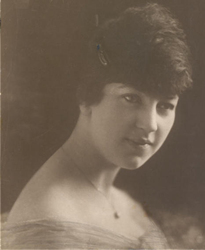
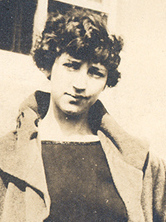 Elsa Wiik was born in
Elsa Wiik was born in 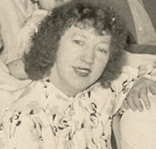 (See
(See 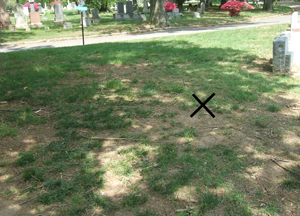 Dagmar and Bert, her husband, had two daughters living with them at this time - 11 year-old Lila and 10 year-old Lola. Bert is listed as a Mate on a steam ship, so it is possible that Elsie and John moved in with Dagmar to keep her company while her husband was at sea. John was now a captain of a fishing boat and both Elsie and Dagmar are listed as keeping house. It is interesting to note that although her sister and brother-in-law were listed as naturalized, Elsie was still an alien and John's naturalization was pending. Another curious thing is that 16, almost 17 year-old daughter June is not living with them. A 1940's census cannot be found for June.
Dagmar and Bert, her husband, had two daughters living with them at this time - 11 year-old Lila and 10 year-old Lola. Bert is listed as a Mate on a steam ship, so it is possible that Elsie and John moved in with Dagmar to keep her company while her husband was at sea. John was now a captain of a fishing boat and both Elsie and Dagmar are listed as keeping house. It is interesting to note that although her sister and brother-in-law were listed as naturalized, Elsie was still an alien and John's naturalization was pending. Another curious thing is that 16, almost 17 year-old daughter June is not living with them. A 1940's census cannot be found for June.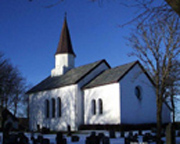 Ove Kristian Olsen Wiik was born on May 12, 1851, in
Ove Kristian Olsen Wiik was born on May 12, 1851, in 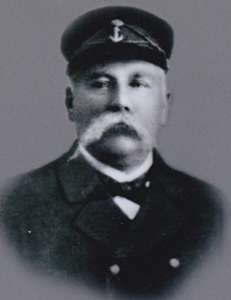 On the 1865 Norway census, 15 year-old Ove Olsen is a foster son of farmer Iver Paulsen on the Viig farm in Ørland. Iver is listed as being born in 1823, not married, living with his widowed mother Karen Iversdatter (born in 1802), brother Christian Paulsen (born in 1832 and a fisherman) and his sister Anne Paulsdatter (born in 1828). From this we can only assume Ove was raised on the Viig farm by the unrelated farm workers/owners. According to descendants, his parents left the farm when Ove was 2 years old. It is interesting to note that his grandmother, on his mother’s side, Anne Elisabeth Johannesdatter, was also living on the Wiig farm in 1865, but with a different family. It is unknown if he had a relationship with her, or even if he knew who she was. On September 30, 1866, Ove Christian was confirmed, while living on the Vik farm. This record lists his parents names, his date of birth, and states he was vaccinated on October 13, 1852. We may never know the exact circumstances of Ove’s youth, but these records indicate that he was raised on the same Viig farm he was born on, in the town of Stjørna, in Ørlands Hovedsogn (main parish), near the the southwestern tip of the Fosen peninsula, where the Stjørnfjord arm begins.
On the 1865 Norway census, 15 year-old Ove Olsen is a foster son of farmer Iver Paulsen on the Viig farm in Ørland. Iver is listed as being born in 1823, not married, living with his widowed mother Karen Iversdatter (born in 1802), brother Christian Paulsen (born in 1832 and a fisherman) and his sister Anne Paulsdatter (born in 1828). From this we can only assume Ove was raised on the Viig farm by the unrelated farm workers/owners. According to descendants, his parents left the farm when Ove was 2 years old. It is interesting to note that his grandmother, on his mother’s side, Anne Elisabeth Johannesdatter, was also living on the Wiig farm in 1865, but with a different family. It is unknown if he had a relationship with her, or even if he knew who she was. On September 30, 1866, Ove Christian was confirmed, while living on the Vik farm. This record lists his parents names, his date of birth, and states he was vaccinated on October 13, 1852. We may never know the exact circumstances of Ove’s youth, but these records indicate that he was raised on the same Viig farm he was born on, in the town of Stjørna, in Ørlands Hovedsogn (main parish), near the the southwestern tip of the Fosen peninsula, where the Stjørnfjord arm begins.  Ove was known and respected as a harbor pilot who knew the Norwegian coastline very well. One time, he had Emperor Wilhelm and Crown Prince Henrick of Germany on board during a violent storm that threatened to sink the ship. He and the crew were credited with saving their lives. The next day he was ordered to the Crown Price’s cabin. The Prince shook his hand and gave him a box with a pair of old gold cufflinks with a diamond in each. The inside of the box had gold letters – courtjeweller (court jeweler) and a big letter “H” for Henrick. (These cufflinks went to his eldest son Petter in America after his death.)
Ove was known and respected as a harbor pilot who knew the Norwegian coastline very well. One time, he had Emperor Wilhelm and Crown Prince Henrick of Germany on board during a violent storm that threatened to sink the ship. He and the crew were credited with saving their lives. The next day he was ordered to the Crown Price’s cabin. The Prince shook his hand and gave him a box with a pair of old gold cufflinks with a diamond in each. The inside of the box had gold letters – courtjeweller (court jeweler) and a big letter “H” for Henrick. (These cufflinks went to his eldest son Petter in America after his death.)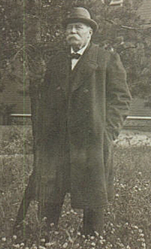 Kristian was a well-liked and respected man in the community, but between 1913 and 1923, the family moved several times within the city of Bergen. During this time five of his children - Kristian, Elsa, Dagmar, Fritz (Freddy) and Karla, at different times while he was at sea, all left for America. Those who came to America said that they feared their father, regarded him a tyrant, were happiest when he was at sea, and that they came to America to escape him. Apparently, the children who stayed in Norway did not feel the same way, as in 1922 his daughter Kitty was married and they moved in with her parents. By 1925, Kitty, her husband, and their three children were living with Ove and Marcelie.
Kristian was a well-liked and respected man in the community, but between 1913 and 1923, the family moved several times within the city of Bergen. During this time five of his children - Kristian, Elsa, Dagmar, Fritz (Freddy) and Karla, at different times while he was at sea, all left for America. Those who came to America said that they feared their father, regarded him a tyrant, were happiest when he was at sea, and that they came to America to escape him. Apparently, the children who stayed in Norway did not feel the same way, as in 1922 his daughter Kitty was married and they moved in with her parents. By 1925, Kitty, her husband, and their three children were living with Ove and Marcelie.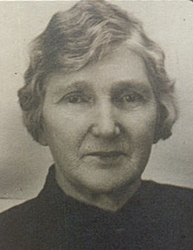 Marcelie Carlotta Fredriksdatter was born on June 10, 1862, in Myklebostad,
Marcelie Carlotta Fredriksdatter was born on June 10, 1862, in Myklebostad, 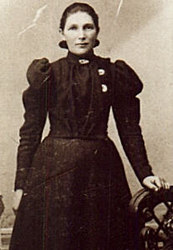 Of the six of her children who went to America, Peter had one son named William, fought in World War I, was a sailor in Florida in 1930, in Brooklyn in 1940, and died there at the age of 67 in 1954; Freddy worked in a stone yard, had two children, and settled in Huntington Station, Suffolk County, NY on Long Island and died there at 82 years-old in 1973; Kristian was a sailor who lost his left leg in a motorcycle accident, lived in Deer Park, NY with his longtime partner Allie, never had children, moved into The Norwegian Nursing Home in Brooklyn and died there at the age of 93 in 1985; ancestor Elsa’s bio is above; Dagmar married twice, raised three daughters, and remained in Brooklyn all her life, where she died at the age of 71 in 1972; Karla married Ford Thudsen, the controller for the Waldorf Astoria Hotel, never had children, lived in Putnam County in upstate NY and died there at the age of 79 in 1981. Of the three daughters who remained in Norway – Kathinka went to Iceland, returned to Norway, and died from complications in childbirth after her sixth child in 1926 at 41 years old. She has descendants in Iceland; Karen, had four children and died in 1972 at the age of 84; and Kitty had ten children and died of stroke at age 78 in 1973. Kitty's daughter Liv is the one who gave us all the family stories (translated by her daughter Åse).
Of the six of her children who went to America, Peter had one son named William, fought in World War I, was a sailor in Florida in 1930, in Brooklyn in 1940, and died there at the age of 67 in 1954; Freddy worked in a stone yard, had two children, and settled in Huntington Station, Suffolk County, NY on Long Island and died there at 82 years-old in 1973; Kristian was a sailor who lost his left leg in a motorcycle accident, lived in Deer Park, NY with his longtime partner Allie, never had children, moved into The Norwegian Nursing Home in Brooklyn and died there at the age of 93 in 1985; ancestor Elsa’s bio is above; Dagmar married twice, raised three daughters, and remained in Brooklyn all her life, where she died at the age of 71 in 1972; Karla married Ford Thudsen, the controller for the Waldorf Astoria Hotel, never had children, lived in Putnam County in upstate NY and died there at the age of 79 in 1981. Of the three daughters who remained in Norway – Kathinka went to Iceland, returned to Norway, and died from complications in childbirth after her sixth child in 1926 at 41 years old. She has descendants in Iceland; Karen, had four children and died in 1972 at the age of 84; and Kitty had ten children and died of stroke at age 78 in 1973. Kitty's daughter Liv is the one who gave us all the family stories (translated by her daughter Åse).
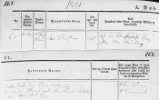

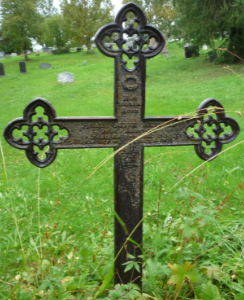 They all moved to Trondenes, Troms County (in the north of Norway) where Ane and Bernt had three more children - Bertrand born on March 21, 1860, Odin born on June 8, 1862 and Anne Oline Berntsen born on February 1, 1865.
They all moved to Trondenes, Troms County (in the north of Norway) where Ane and Bernt had three more children - Bertrand born on March 21, 1860, Odin born on June 8, 1862 and Anne Oline Berntsen born on February 1, 1865. 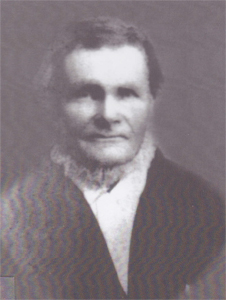 Fredrik Mortensen was born on May 3, 1828 in
Fredrik Mortensen was born on May 3, 1828 in 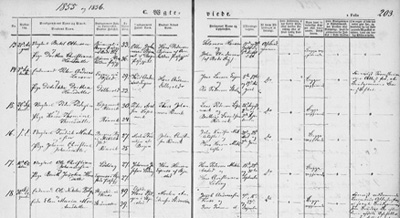
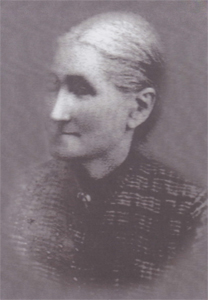




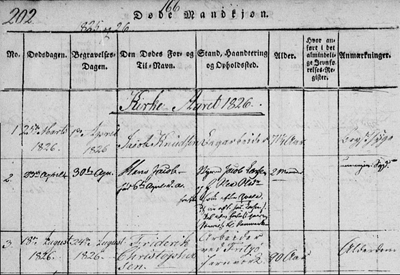
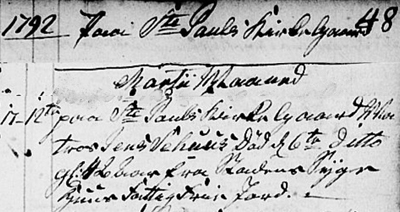 The fact that he was home to attend his daughter's baptism in April of 1787 and he is not mentioned in the overview of seamen in Bergen 1754-1800, seems to support the theory that this wasn’t a steady job.
The fact that he was home to attend his daughter's baptism in April of 1787 and he is not mentioned in the overview of seamen in Bergen 1754-1800, seems to support the theory that this wasn’t a steady job. 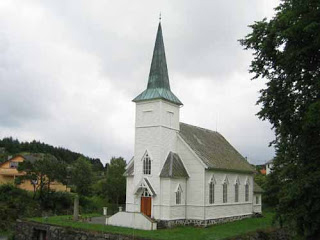
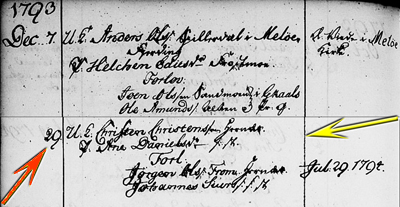
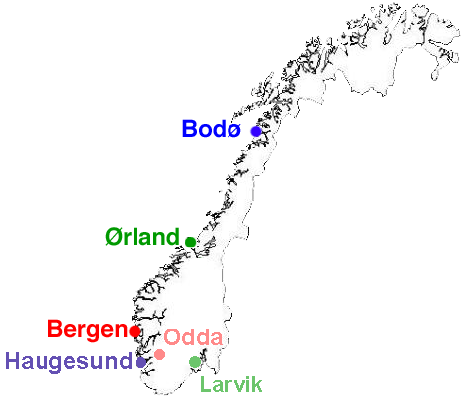
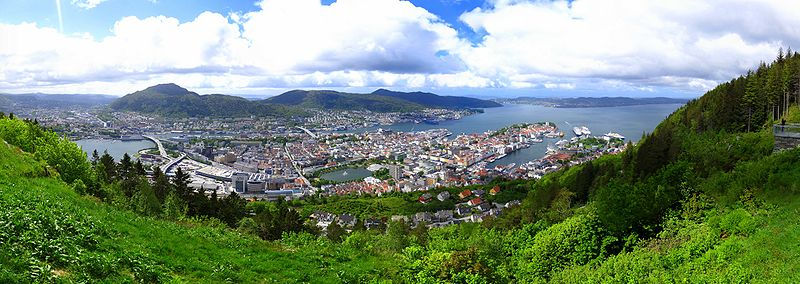
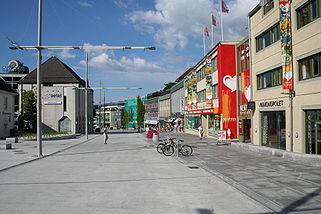 Nesttun is an urban center and neighborhood in the southern parts of the city of Bergen, Norway, located approximately 6 ½ miles (10 kilometers) south of the city center. It was the center of the Fana Municipality, which merged with Bergen in 1972, and is today the administration center of the Fana Borough. Nesttun contains a mall, several smaller shops, and a library.
Nesttun is an urban center and neighborhood in the southern parts of the city of Bergen, Norway, located approximately 6 ½ miles (10 kilometers) south of the city center. It was the center of the Fana Municipality, which merged with Bergen in 1972, and is today the administration center of the Fana Borough. Nesttun contains a mall, several smaller shops, and a library.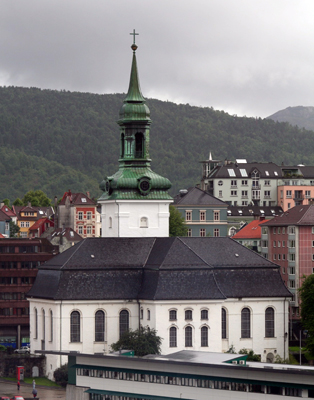 Nykirken, which literally means The New Church is a cruciform church in Bergen, Norway, located on Nykirkeallmenningen (street) between Strandgaten and Vågen. Although it is generally known as the Nykirken, it was consecrated in 1622 by Bishop Niels Paaske as Holy Trinity Church.
Nykirken, which literally means The New Church is a cruciform church in Bergen, Norway, located on Nykirkeallmenningen (street) between Strandgaten and Vågen. Although it is generally known as the Nykirken, it was consecrated in 1622 by Bishop Niels Paaske as Holy Trinity Church.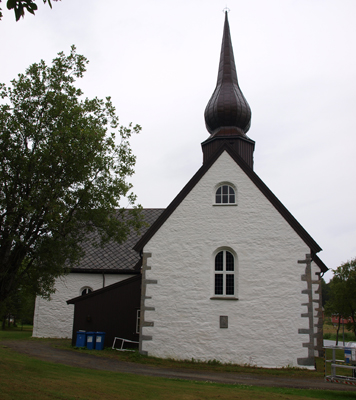 The village of Bodø was granted township status in 1816 and is the capital of Nordland County, Norway. It is part of the traditional region of Salten. The municipality is named after the old Bodøgård farm (Old Norse: Boðvin), since the town was built on its ground. The first element might be boði, which means sunken rock or skerry and the last element is vin, which means meadow or pasture. The last element may have been misunderstood as øy, which means island (and written with the Danish language form ø). On January 1, 1938, a part of the municipality of Bodin (a population of 559) was transferred into the town of Bodø. Over the years more areas were merged with Bodø making it today the largest urban area in Nordland County, and the second largest in North Norway. Bodø is the northern terminus of Nordlandsbanen, the northern end of the railroad network of Norway.
The village of Bodø was granted township status in 1816 and is the capital of Nordland County, Norway. It is part of the traditional region of Salten. The municipality is named after the old Bodøgård farm (Old Norse: Boðvin), since the town was built on its ground. The first element might be boði, which means sunken rock or skerry and the last element is vin, which means meadow or pasture. The last element may have been misunderstood as øy, which means island (and written with the Danish language form ø). On January 1, 1938, a part of the municipality of Bodin (a population of 559) was transferred into the town of Bodø. Over the years more areas were merged with Bodø making it today the largest urban area in Nordland County, and the second largest in North Norway. Bodø is the northern terminus of Nordlandsbanen, the northern end of the railroad network of Norway.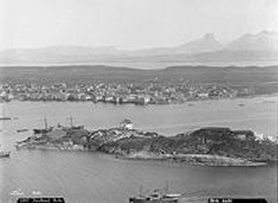
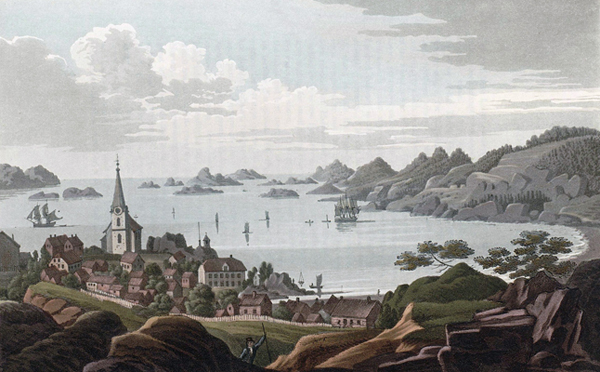 Larvik is a town and municipality in Vestfold county, Norway, approximately 65 mi1es (5 kilometres) southwest of Oslo. The municipality covers an area of 200 square miles (530 sq km). It was founded in 1671 by Ulrik Fredrik Gyldenløve, who became the first count of Laurvig. The castle can still be vistited today. The city was established as a municipality on January 1, 1838.
Larvik is a town and municipality in Vestfold county, Norway, approximately 65 mi1es (5 kilometres) southwest of Oslo. The municipality covers an area of 200 square miles (530 sq km). It was founded in 1671 by Ulrik Fredrik Gyldenløve, who became the first count of Laurvig. The castle can still be vistited today. The city was established as a municipality on January 1, 1838.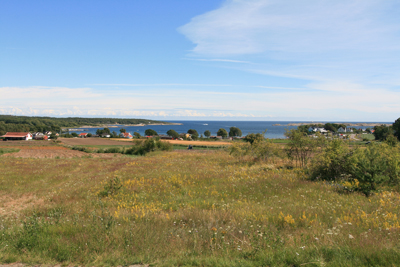 environs are visited by most of the inhabitants of the neighbouring towns, whose gratification is enhanced by viewing the hospitable and noble mansion, gardens, &c, of the Count, and their amusements are varied by the pleasant water excursions, and agreeable rides, to Holmstrand, Tonsberg, Fredericksvearne, &c. &c. The River Lauven brings the waters from the Tillefield and Hardangerfield mountains, into this bay below the town. It traverses the borders of Tellemarken and Numedals, through rivers, and lakes, navigable for transporting timber, 200 miles towards its source.
environs are visited by most of the inhabitants of the neighbouring towns, whose gratification is enhanced by viewing the hospitable and noble mansion, gardens, &c, of the Count, and their amusements are varied by the pleasant water excursions, and agreeable rides, to Holmstrand, Tonsberg, Fredericksvearne, &c. &c. The River Lauven brings the waters from the Tillefield and Hardangerfield mountains, into this bay below the town. It traverses the borders of Tellemarken and Numedals, through rivers, and lakes, navigable for transporting timber, 200 miles towards its source.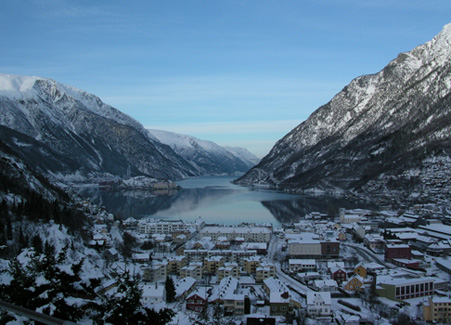 Originally just a parish, Odda is now a municipality and town in the county of Hordaland, Norway. It was named after the old farm Odda (Old Norse Oddi), since the first church was built there. The name is identical with the word oddi, which means headland. The town of Odda is the center of the landscape of Hardanger, located at the end of the Hardangerfjord.
Originally just a parish, Odda is now a municipality and town in the county of Hordaland, Norway. It was named after the old farm Odda (Old Norse Oddi), since the first church was built there. The name is identical with the word oddi, which means headland. The town of Odda is the center of the landscape of Hardanger, located at the end of the Hardangerfjord.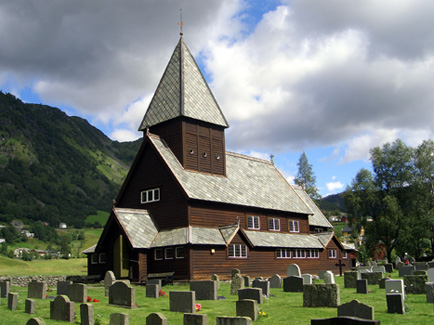 In the Middle Ages, Røldal church received large donations from many of pilgrims who flocked to the church. As a result, the small village where the church is located became quite prosperous. In the 17th century the walls inside the church were richly decorated with paintings. The altarpiece by German painter Gottfried Hendtzchell from Wroclaw in Silesia dates back to 1629.
In the Middle Ages, Røldal church received large donations from many of pilgrims who flocked to the church. As a result, the small village where the church is located became quite prosperous. In the 17th century the walls inside the church were richly decorated with paintings. The altarpiece by German painter Gottfried Hendtzchell from Wroclaw in Silesia dates back to 1629. 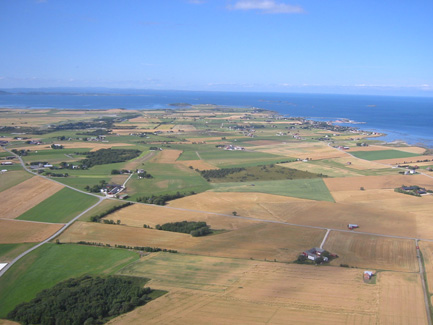 Ørland is a municipality in Sør-Trøndelag County, Norway at the southwestern tip of the Fosen peninsula. It is the only area dominated by flat lowland on the peninsula, but it is windy as it faces the Norwegian Sea to the west with the Trondheimsfjord and the mouth of the Stjørnfjord to the east. Although the majority of Ørland is on the Fosen peninsula, the islands of Garten, Storfosna, and Kråkvåg are also populated. The Kjeungskjær lighthouse lies at the mouth of the Bjugnfjorden in the northeastern part of Ørland.
Ørland is a municipality in Sør-Trøndelag County, Norway at the southwestern tip of the Fosen peninsula. It is the only area dominated by flat lowland on the peninsula, but it is windy as it faces the Norwegian Sea to the west with the Trondheimsfjord and the mouth of the Stjørnfjord to the east. Although the majority of Ørland is on the Fosen peninsula, the islands of Garten, Storfosna, and Kråkvåg are also populated. The Kjeungskjær lighthouse lies at the mouth of the Bjugnfjorden in the northeastern part of Ørland. 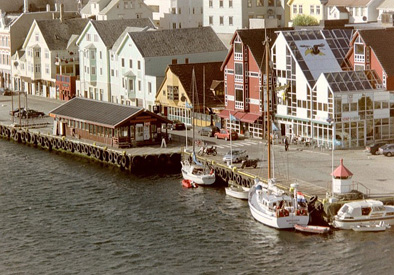 Haugesund is a town and municipality in the county of Rogaland, Norway. The town is the main population center of the Haugaland district and northern Rogaland area. Having a population of 1,066, it was separated from Torvastad as a town and municipality of its own in 1855. The town is named after the strait Haugesundet. The first element is the genitive case of Hauge from the Old Norse word haugr meaning hill or mound. The last element is sund meaning strait or sound.
Haugesund is a town and municipality in the county of Rogaland, Norway. The town is the main population center of the Haugaland district and northern Rogaland area. Having a population of 1,066, it was separated from Torvastad as a town and municipality of its own in 1855. The town is named after the strait Haugesundet. The first element is the genitive case of Hauge from the Old Norse word haugr meaning hill or mound. The last element is sund meaning strait or sound.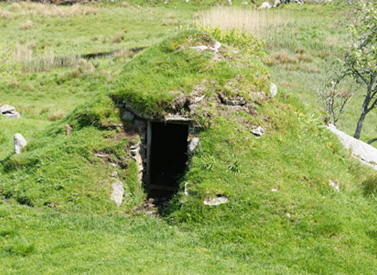 Despite being barely a village back then; the areas around Haugesund were lands of power during the Viking Age. King Harald Fairhair, the first king of Norway, lived at Avaldsnes, very close to Haugesund. Fairhair was buried at Haraldshaugen, a burial mound adjacent to Karmsund. This site is the namesake of the town and municipality of Haugesund. The national monument at Haraldshaugen was raised in 1872, to commemorate the 1000th anniversary of the Battle of Hafrsfjord in 872. The Battle of Hafrsfjord has traditionally been regarded as when western Norway was unified under a single monarch for the first time. The original coat-of-arms showed a herring barrel, an anchor, and three seagulls. It was replaced in 1929 by a design drawn by Hallvard Trætteberg of just three seagulls.
Despite being barely a village back then; the areas around Haugesund were lands of power during the Viking Age. King Harald Fairhair, the first king of Norway, lived at Avaldsnes, very close to Haugesund. Fairhair was buried at Haraldshaugen, a burial mound adjacent to Karmsund. This site is the namesake of the town and municipality of Haugesund. The national monument at Haraldshaugen was raised in 1872, to commemorate the 1000th anniversary of the Battle of Hafrsfjord in 872. The Battle of Hafrsfjord has traditionally been regarded as when western Norway was unified under a single monarch for the first time. The original coat-of-arms showed a herring barrel, an anchor, and three seagulls. It was replaced in 1929 by a design drawn by Hallvard Trætteberg of just three seagulls.